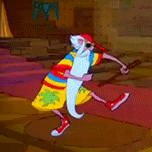Like, this highly tailored aesthetic is really interesting. The cohesive nature of the places being created, and the visuals that feel of the past but also unachievable by the era. Like, yeah, this guy typed a bunch of words into a text prompt, but its a highly curated visual style. Could this have been created without AI? Yeah totally. I think the weirdness of AI adds to the surrealist nature of it all. IDK.
I’m very conflicted about AI. Our neoliberal capitalist system is highly incompatible with it. Its potential is squandered by capitalism’s constraints. Its built on other peoples labor, it runs in conflict with intellectual property rights. Its requirements for massive datasets ensures the infringement on those rights. The grievances are real and valid. The contradictions are leading to the collapse of companies like OpenAI, and yet it thrives in the open source community. Its environmental impacts are likely worse then the crypo industry.
Yet I can’t help but see stuff like this and think its cool.


Yeah, that’s precisely my thinking. The anti-AI movement by artists is a natural extension of the fact that they make art to survive under capitalism. Capitalism has taken art, this form of expression, and commodified it, turned it into a transactional expression. This process already dulled the edge of Art’s blade, rounded off its corners, to make the works created more palatable to a mass audience. AI-generated art under capitalism only takes that process to its most logical, extreme. It is a real threat to the highly specialized artistic talent that is required by the entertainment and marketing industries, talent that is opinionated, and wants to put a piece of themselves in their work, who still have things to say with what they create, even under the existing constraints of capitalism. The use of AI for art under capitalism firstly removes that opinionated, authoritative voice from the work, and furthers the ultimate goal of proletarianizing artists to drive their wages down.
While the work above is the result of an individual, creating their own work through AI, a great example of the impact of AI on creative work I think is The Archive In Between. This is also a project I like that heavily uses AI. It stands in contrast to the above, as it is a collection of written works from various authors accompanied by art. They describe the project as such:
I think early on, almost all the art being created to accompany these stories were AI generated. Each story would contain several images with a general cohesiveness. The level of ability presented in these images is of the level of ability you might find from someone working full-time as an artist in a creative field (gaming, movies, books, etc.), someone with years of experience. If this project had to work with artists from the jump, it might not have been as successful, since the art is what really sells these videos, and to get art of this quality you would need to pay a good commission rate for it. However, part of the appeal of The Archive In Between is how “other worldly” the art can be, and some of that quality can be attributed to the nature of AI and its general weirdness, a quality that’s probably difficult to replicate without having seen the weirdness AI creates. I don’t think a project like The Archive In Between could produce the level of content it does as regularly as it does without AI. I also know that because of that truth, this project exists on the back of the surplus value of the labor of millions of artists who will never see a fraction of a cent in return for the work inside these anthologies.
AI, in many ways, is a surrealist engine. If the goal of surrealism is to subvert people’s expectations of reality, it helps tremendously if you have been trained to replicate images of reality without ever having a concept of reality itself. AI has no data on the natural world and how it exists and functions, no understanding of physics and its laws, no understanding of biology and the way natural things are constructed. It just knows the next most likely set of pixels to make a Clock, and it doesn’t care if the clock could never exist in the way the AI presented it, or if the gears of the clock have incompatible numbers of teeth, or if their arrangement doesn’t result in a functioning clock. However, it’ll be just good enough that at a glance, you might not know what is wrong, you just know that it is wrong. It’s wrong in ways our brain might not even be able to replicate because our brains are so attuned to the way things actually exist, that to imagine things that could not exist, unbound by rational and logical thinking, unbound by laws and expectations burned into our brain through millennia of observation of the material world, would be difficult without some form of chemical assistance.
This complex relationship, between artists, AI, and art itself is fascinating. It’s only when it becomes impacted by the profit motive and the wage system of capitalism that this relationship becomes corrupted, and creates a broken cycle where there could instead be an interesting new realm of surrealism.
A friend of mine used generative AI trained on his own work as a way to identify themes he wasn’t aware he was using. It was pretty cool
That is a cool use case!